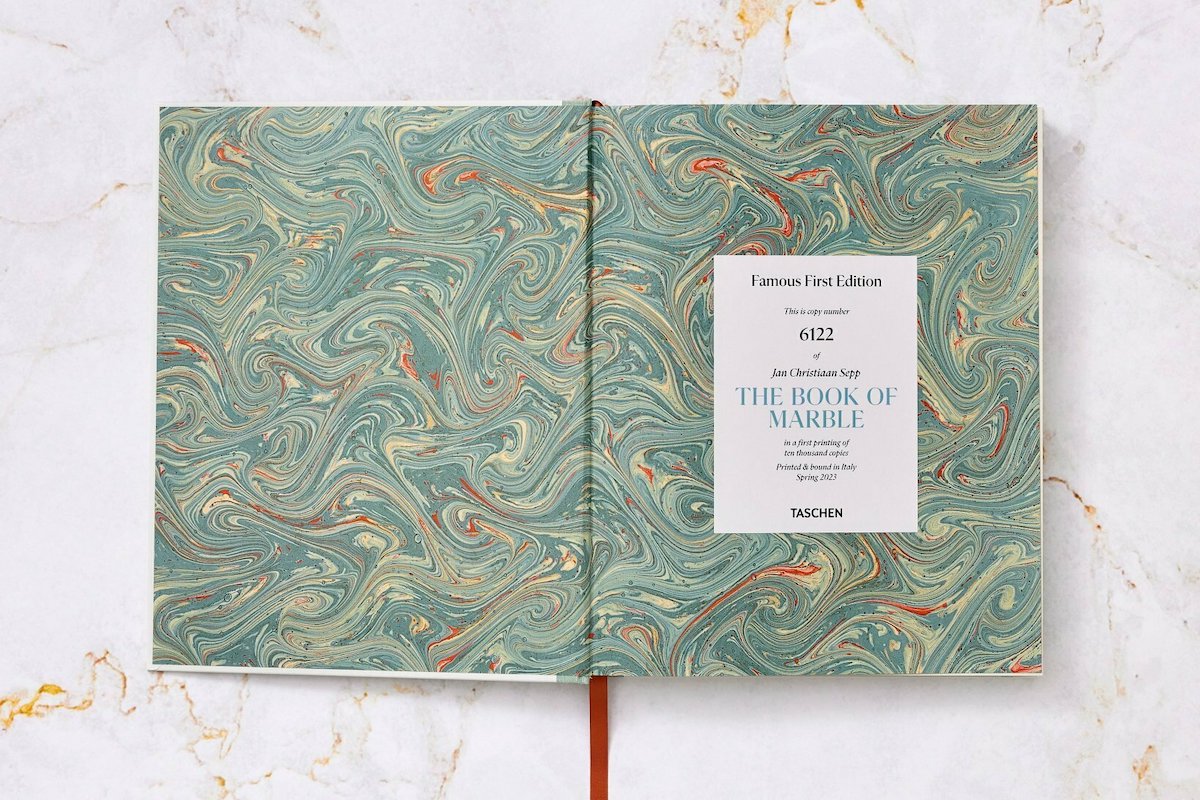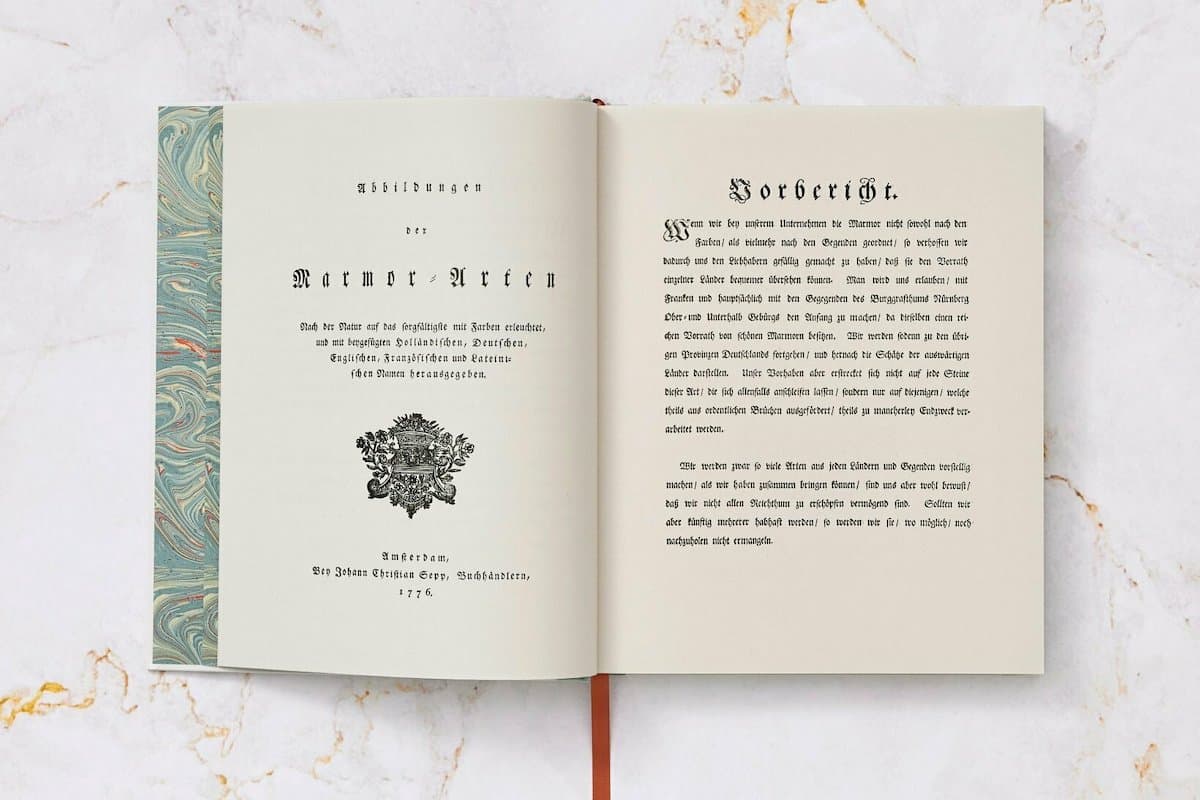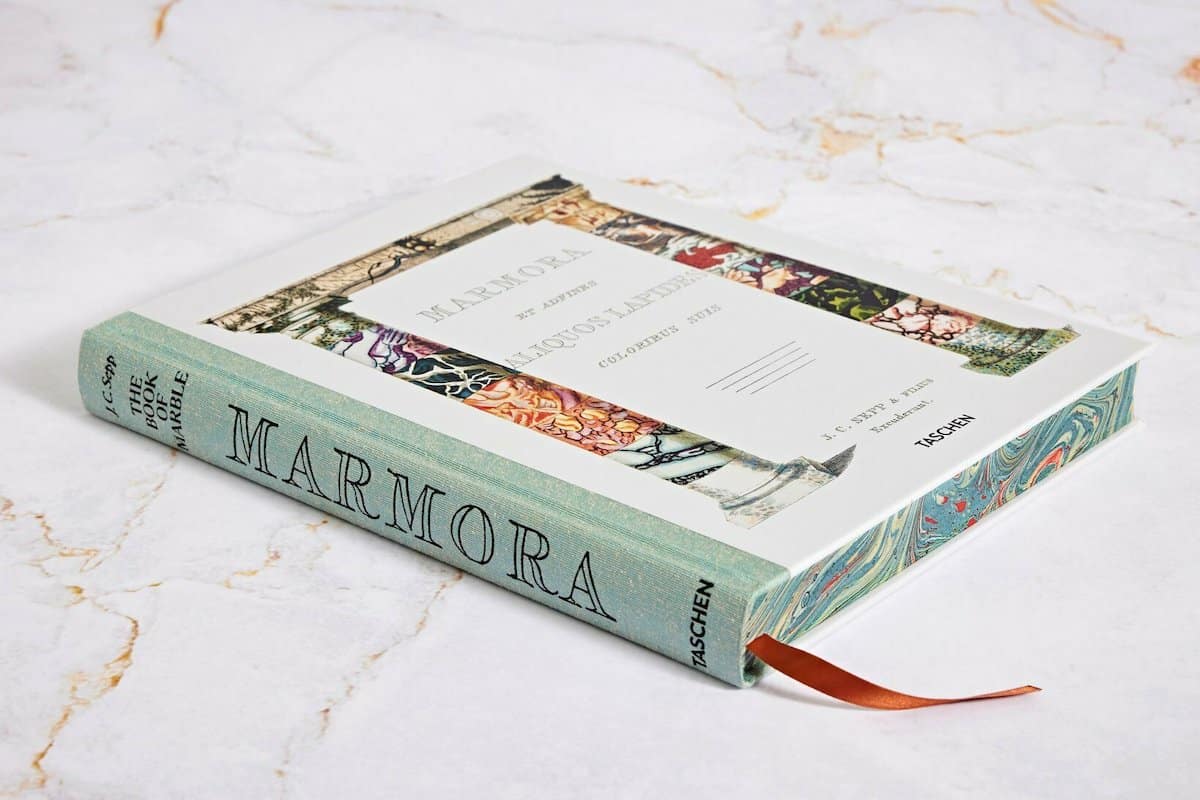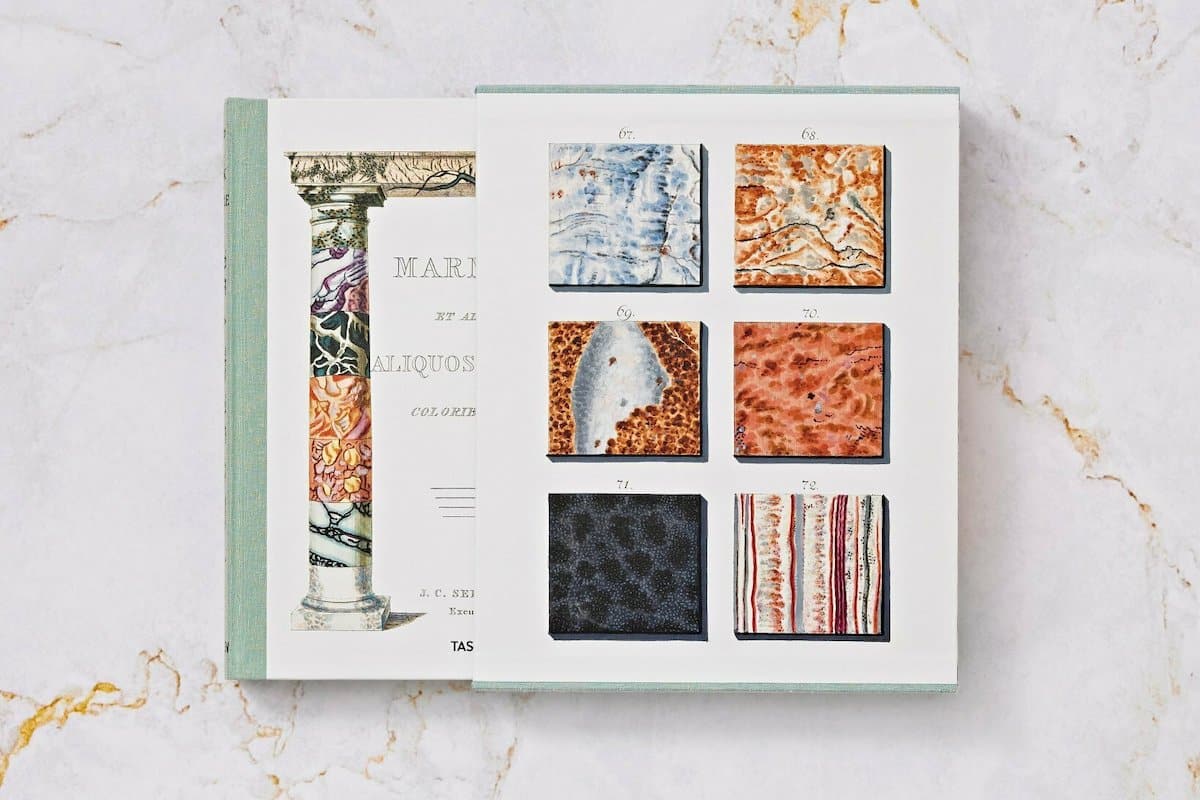
This post may contain affiliate links. If you make a purchase, My Modern Met may earn an affiliate commission. Please read our disclosure for more info.
Marble has a long place in history. From sculptures to architecture, it has been seen throughout time—often as a white material with a subtle swirl throughout. But there’s a lot more to marble than that. Marmor Soorten, or The Book of Marble, offers a striking look at the different types that exist throughout the world. First published by Dutch naturalist Jan Christiaan Sepp in 1776, this catalog features 570 varieties as depicted through scientific illustrations and annotations. The tome was a large undertaking to produce; The Book of Marble was released in 11 volumes and required 100 color plates to print.
Now, Taschen is bringing this Enlightenment-era book back to life. The renowned publisher has printed the original text in its entirety, paying homage to a time when the pursuit of learning across 18th-century Europe was growing in popularity.
Taschen is adding one element to the book that wasn’t in the original. The reprint features new photography to showcase the intricacies of marble samples. Together with hand-colored plates that are “arranged with painstaking precision,” there’s an artistic bend to the scientific book. The samples look like small vignettes of abstract art alongside an encyclopedic knowledge of marble.
The Book of Marble is now available to order through Taschen and Bookshop.
Marmor Soorten, or The Book of Marble, offers a striking look at the different types that exist throughout the world.

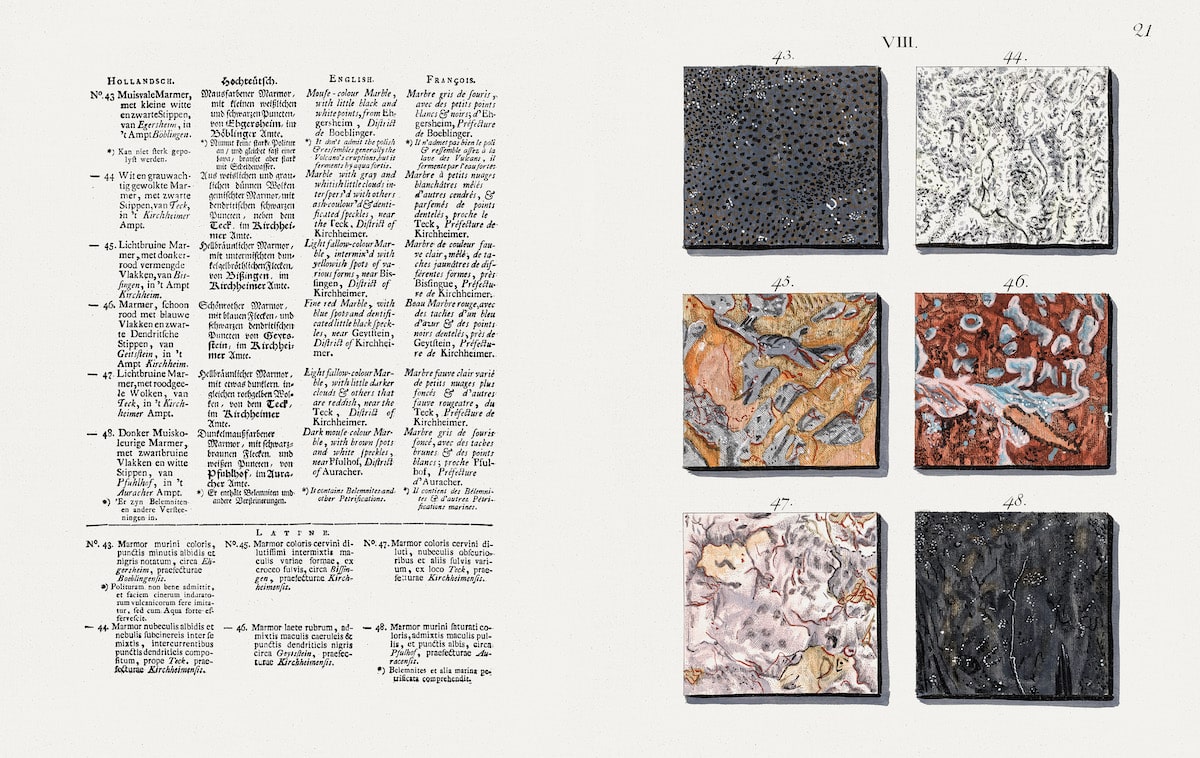
Jan Christiaan Sepp, Marmor Soorten (1776)
Marble of Württemberg (plate 21)
© TASCHEN / Sächsische Landesbibliothek – Staats- und Universitätsbibliothek (SLUB), Dresden
First published by Dutch naturalist Jan Christiaan Sepp in 1776, it was a catalog of 570 varieties as depicted through scientific illustrations and annotations.
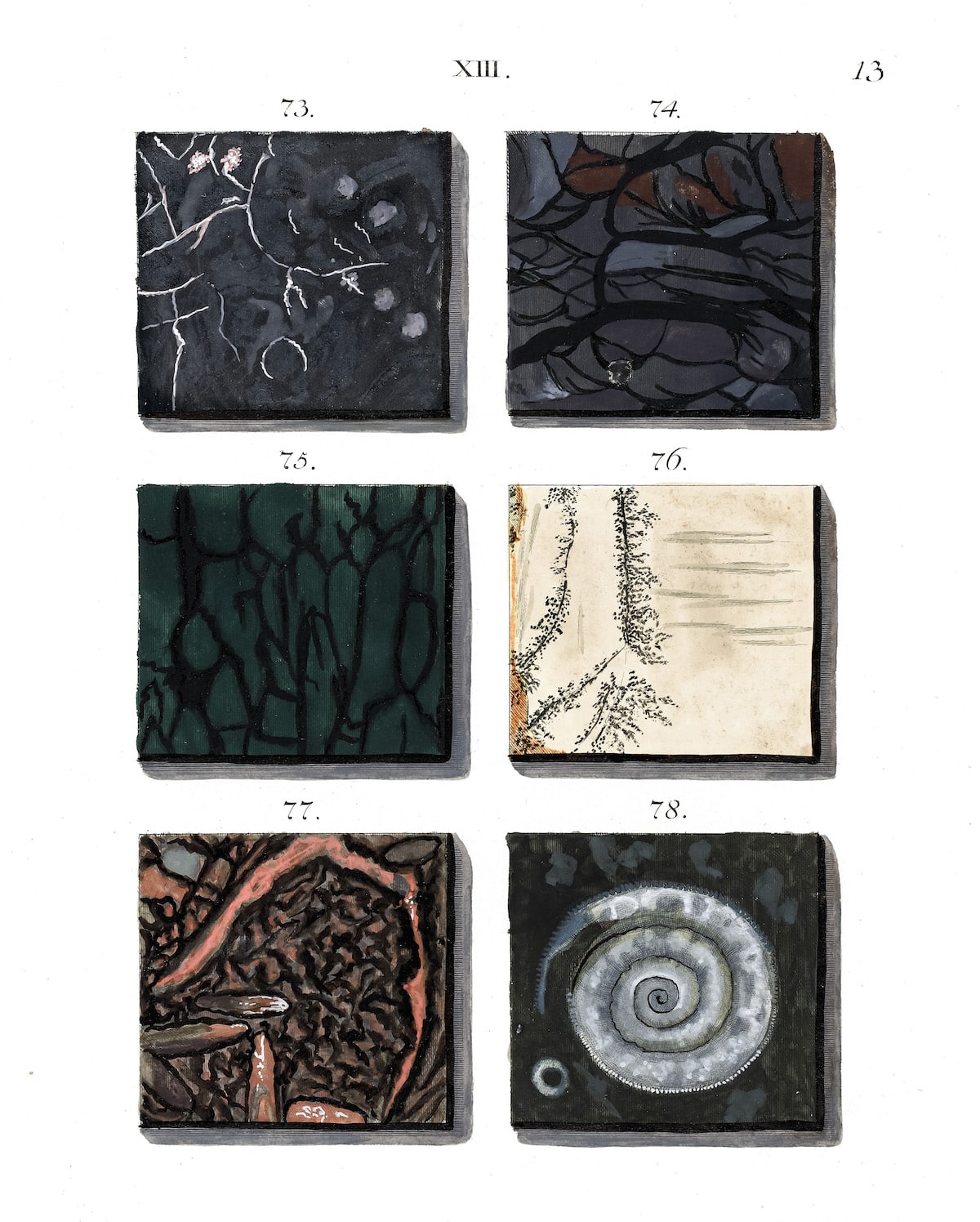
Jan Christiaan Sepp, Marmor Soorten (1776)
Marble of Bayreuth (plate 13)
© TASCHEN / Sächsische Landesbibliothek – Staats- und Universitätsbibliothek (SLUB), Dresden
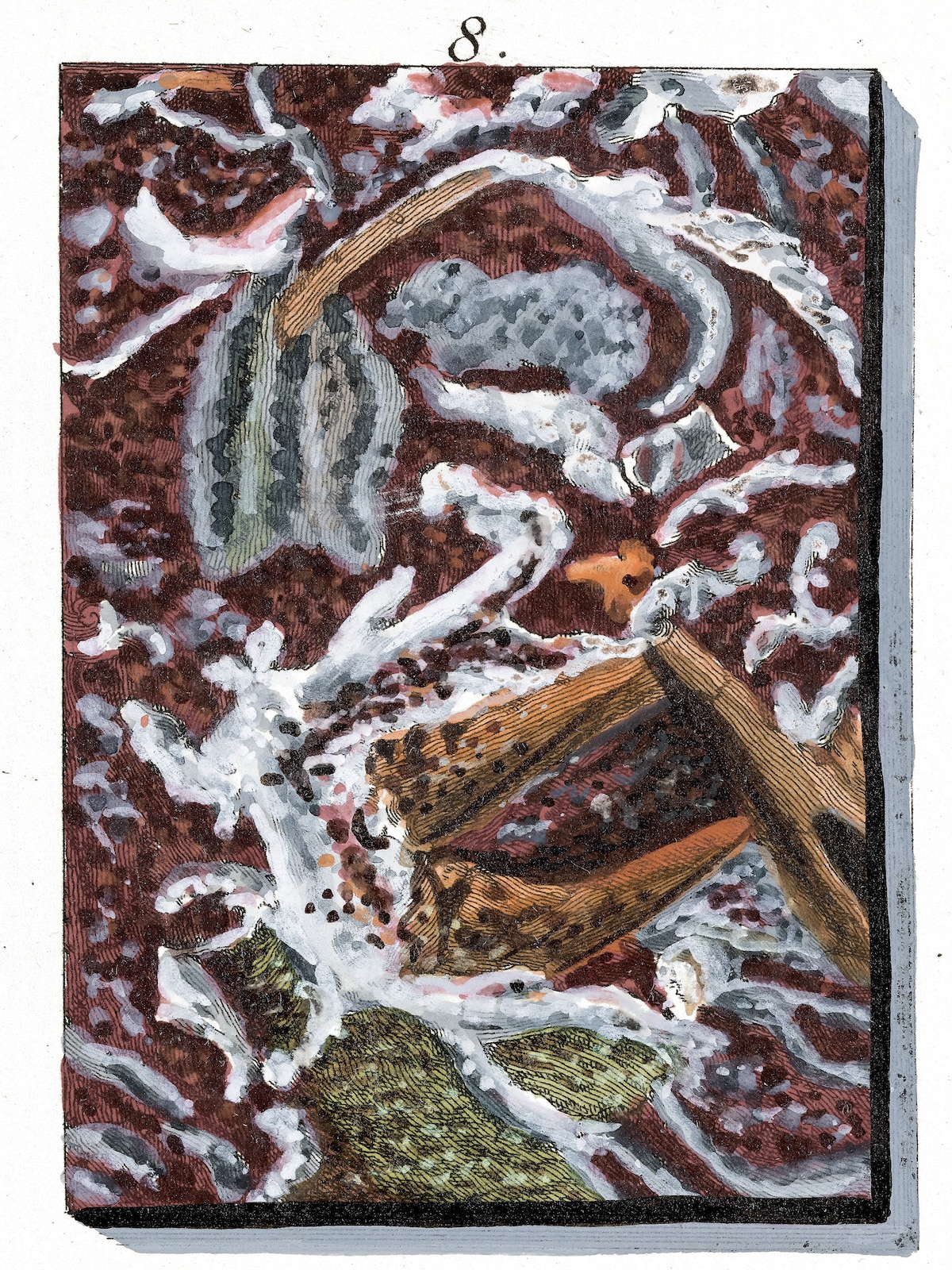
Jan Christiaan Sepp, Marmor Soorten (1776)
Marble elegantly varied by reddish, ash-colour and yellow spots, with milk-white large veins (plate 44, detail)
© TASCHEN / Sächsische Landesbibliothek – Staats- und Universitätsbibliothek (SLUB), Dresden
An upcoming release from Taschen is bringing this Enlightenment-era book back to life. The renowned publisher has printed the original text in its entirety.
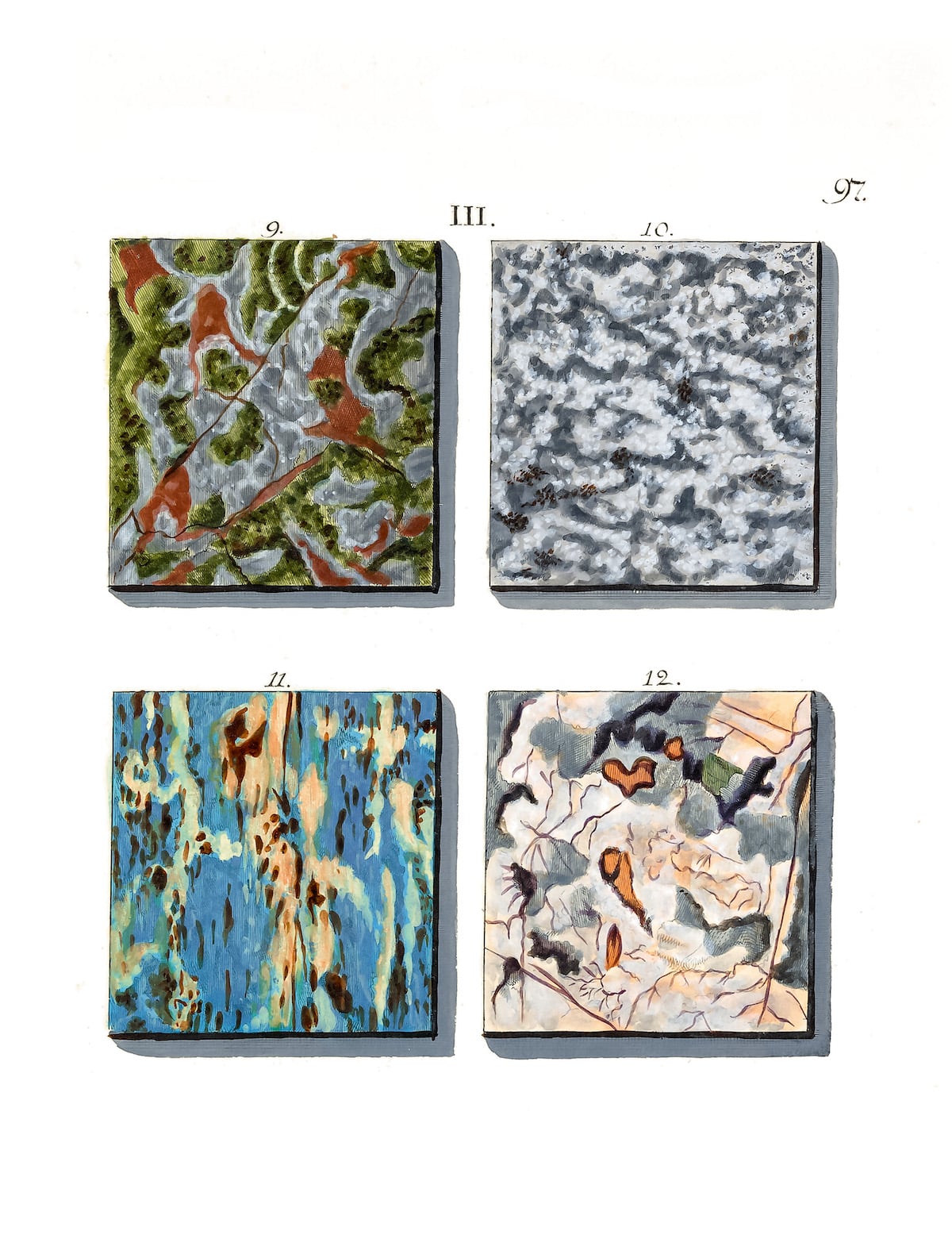
Jan Christiaan Sepp, Marmor Soorten (1776)
Additional marble types from the addendum of six plates, including emerald and lazulite (plate 97)
© TASCHEN / Getty Research Institute, Los Angeles
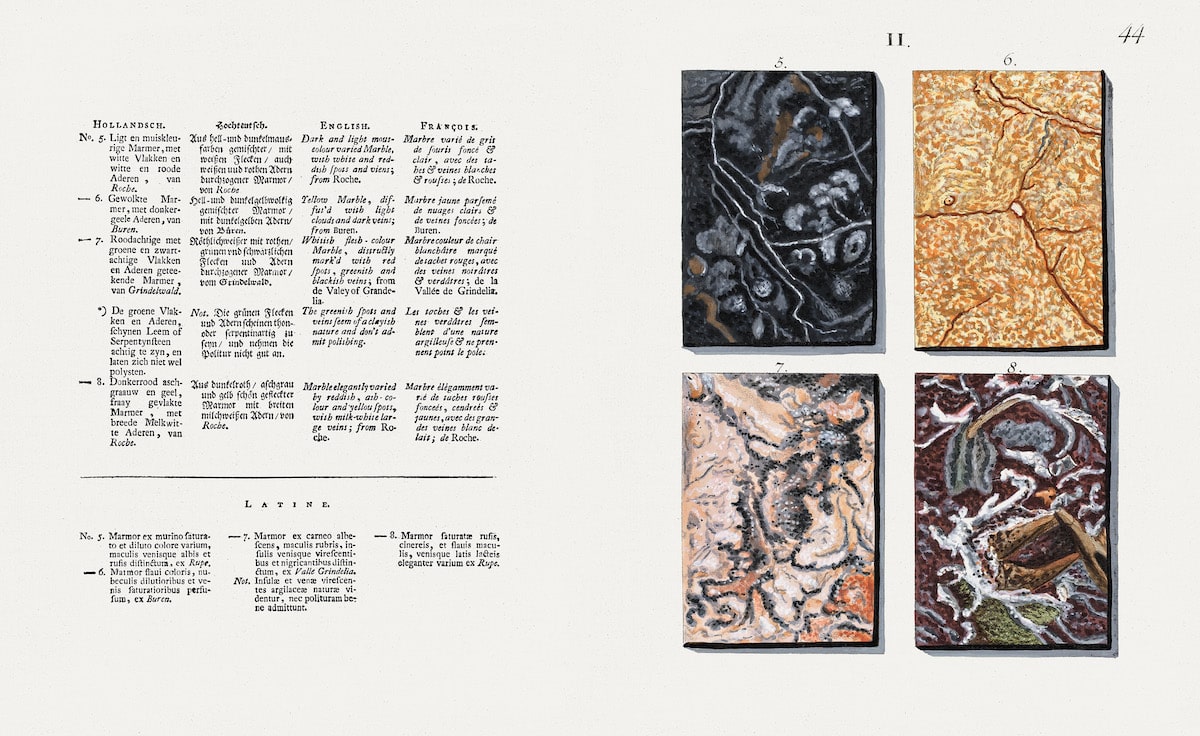
Jan Christiaan Sepp, Marmor Soorten (1776)
Marble of Switzerland, from the canton of Bern (plate 44)
© TASCHEN / Sächsische Landesbibliothek – Staats- und Universitätsbibliothek (SLUB), Dresden
Taschen is adding one element to the book that wasn’t in the original. The reprint features new photography to showcase the intricacies of marble samples.
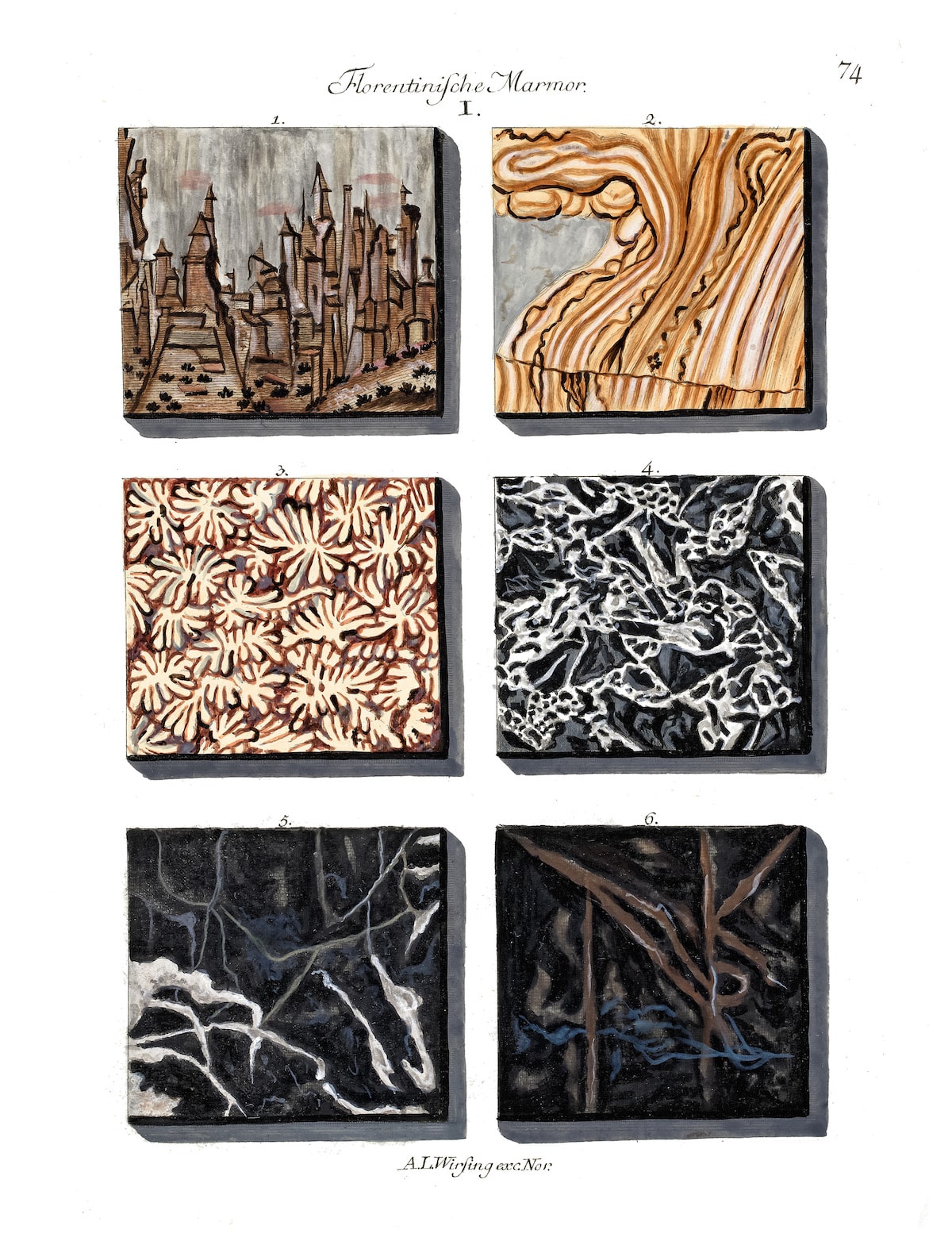
Jan Christiaan Sepp, Marmor Soorten (1776)
Italian and antique marble (plate 74)
© TASCHEN / Sächsische Landesbibliothek – Staats- und Universitätsbibliothek (SLUB), Dresden
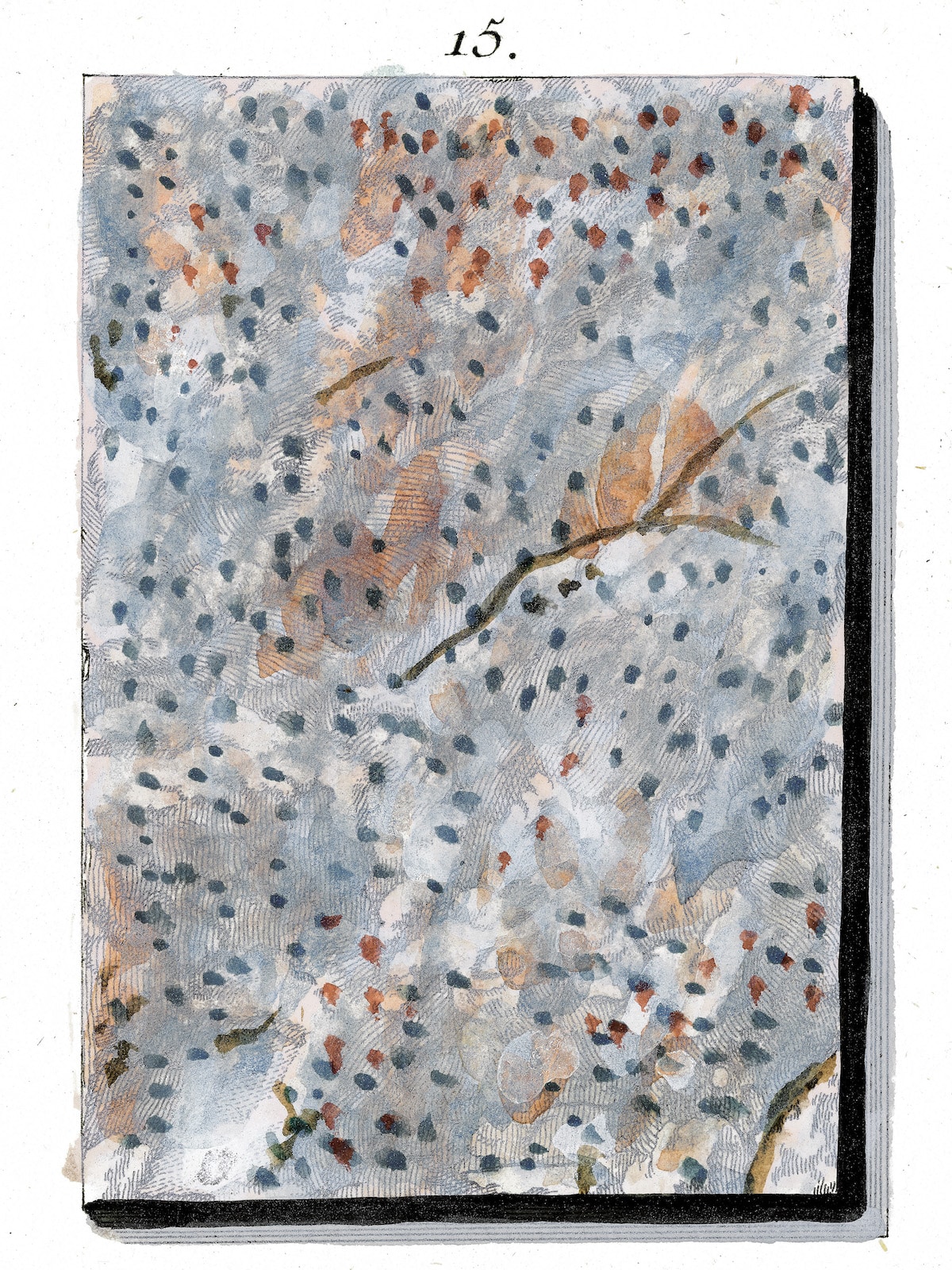
Jan Christiaan Sepp, Marmor Soorten (1776)
Confused intermixed marble, with flesh, ash-color, greenish and whitish clouds (plate 46, detail)
© TASCHEN / Sächsische Landesbibliothek – Staats- und Universitätsbibliothek (SLUB), Dresden
Together with hand-colored plates that are “arranged with painstaking precision,” there’s an artistic bend to the scientific book.
